Haggis!
Everything You Need to Know About Haggis
Haggis in general has an un-deserved bad reputation.
Yes, it may be fun to frighten your friends and co-workers with a threatened haggis dinner invitation, but really, most people like it once they try it. Do you like sausage? Then you’ll probably like haggis.
We have haggis for everyone!
If you have never tried haggis before, give our Highland beef haggis a try. It’s a very mild haggis, that almost everyone will like. If you already know you like haggis, try our traditional lamb. If you love haggis, and/or you’ve eaten it in Scotland, try the “hard-core” haggis. We’re pretty sure you’ll love it!
What is haggis?
Traditionally it was a way for the common folk to use and extend the cheapest cuts of meat available, including the organ meats. The meats were minced and blended with oats, wild onions, herbs and spices, and anything else available. Then the mixture is stuffed into a stomach, and slow-cooked for hours in a simmering kettle of water. The oats soak up all the cooking juices, and the end result is a savory delicacy.
It’s the “cooked in a stomach” thing that usually freaks people out.
But really, what’s the difference? Have you ever eaten a brat or a “natural casing” wiener? Of course you have. But you didn’t think twice about eating a meat product that was stuffed into and cooked in a piece of intestine. Same concept.
It might surprise you, but the idea of a stomach as a sausage casing (or an ingredient) is not unique to Scotland. Here are some examples from other cultures:
- Chireta — Northeastern Spain. Organ meats including the stomach, chopped and mixed with rice, chopped pancetta or cured ham, parsley, salt, garlic, cinnamon and white pepper. Stuffed into intestines and simmered in broth just like haggis.
- Seimaage or Stuffed Hog Maw — Pennsylvania Dutch. A pig’s stomach stuffed with cubed potatoes, pork sausage, cabbage, onions, and spices. Usually roasted rather than boiled like a haggis. Traditionally, a stuffed hog maw, not turkey, was the main course for Thanksgiving dinner among Pennsylvania Dutch families!
- Saumagen — Southwest Germany. A pig’s stomach stuffed with potatoes, carrots and pork (sometimes beef), usually spiced with onions, marjoram, nutmeg and white pepper. Some recipes also include cloves, coriander, thyme, garlic, bay leaf, cardamom, basil, caraway, allspice, and/or parsley. Cooked just like a haggis.
- Chaudin — Southern Louisiana Cajun dish. Hog maw stuffed with pork sausage, diced potatoes or rice, cabbage, onions, and spices. Usually simmered first, then roasted until golden brown and crispy. Here’s a recipe I’d actually like try!
- Kishka — Popular all over Eastern Europe, with hundreds of variations. Made with a mixture of meat, organ meats, potatoes, rye, buckwheat, or barley, and vegetables or spices. Stuffed into an intestine, stomach, or bladder. Slow simmered just like a haggis.
- Mortadella — Famously made in Bologna Italy. This is a cured sausage about the size of a haggis, stuffed into a bladder instead of a stomach. Made from very finely minced meat (usually pork), and studded with diced fat. Flavored with whole or ground black pepper, myrtle berries, nutmeg, pistachios, jalapeños, and/or olives. Slow cooked, sometimes smoked, then aged for a short time.
- Pölsa — A traditional Swedish dish, very similar to haggis, but without the casing. Made with ground beef or minced pork, liver, heart, onions, and barley. Seasoned with black pepper, and marjoram. Pölsa is usually served with boiled or fried potatoes, pickled beets, and sometimes fried eggs. Sounds good to me!
- Slátur — This Icelandic haggis is made in two versions: “Blóðmör” (bloodlard), a sheep’s stomach stuffed with a mixture of sheep’s blood, rolled oats and cut up bits of sheep’s fat, and “lifrarpylsa” (liver sausage), which consists of sheep stomach stuffed with a mixture of ground lamb’s liver, rolled oats and cut-up bits of mutton.
- Goetta — (pronounced get-uh) A haggis-like sausage popular in the Cincinnati, Ohio area. Made from ground meat (pork, or pork and beef), pin-head oats and spices.
All over the world, for all of human history, people have found creative ways to use all the “nasty bits”, as one of my favorite food-writers affectionately put it. Often the stomach has been used as a convenient container. Haggis, though our favorite, is just one of many similar dishes.
How do you cook haggis?
Our canned haggis is already cooked. Just heat and serve! It is very easy to heat on the stove in a pan or skillet, or in the microwave. For a traditional texture, just heat gently, stirring frequently. Add a little bit of water (optional) while cooking if you like it very moist.
Alternatively, one of our favorite methods is to serve haggis crispy, with crispy fried potatoes. Add a fried egg on top and you have a world-class breakfast, or the best hangover food ever! 😁
- Fry the potatoes (hash browns or home fries) in a large skillet, until crisp to your liking. Preferable in plenty of bacon grease! 😊
- When the potatoes are done, scoot them all to the outside of the pan (or remove them to a bowl if your pan isn’t large enough).
- Scoop your can of haggis into the middle of the fry pan and spread it out to fry nice and crispy, stirring occasionally.
- When the haggis is crispy to your liking, stir the haggis and potatoes all together and serve.
- Serve with eggs and bacon, on top or on the side.
- YUM!
How long will haggis last?
The published shelf-life of our canned haggis is 2 years. However, it never really expires. It’s very durable stuff. We are confident that you could store a case of haggis in a cool, dry, bomb-shelter for 20+ years and it will still be delicious. 😊
I don’t want to eat the whole can at once. What do I do?
A neat trick we like to share will allow you to freeze your haggis in handy serving portions, ready to heat and eat.
- Using a can opener, cut BOTH ends of the can of haggis open.
- Push firmly on the lid on either end, and the tube of haggis will slide out intact.
- Then using a sharp knife, slice the haggis into serving portions, approximately 1/2 to 1 inch thick as desired.
- Wrap the slices in aluminum foil or plastic wrap, zipper bags, or vacuum seal, and freeze.
- When you want a haggis meal or snack, single portions are super-easy to heat and server as needed.
- Wanna get fancy? Wrap your haggis slices in bacon before freezing!
- YUM!
Shop Now for Haggis!
-
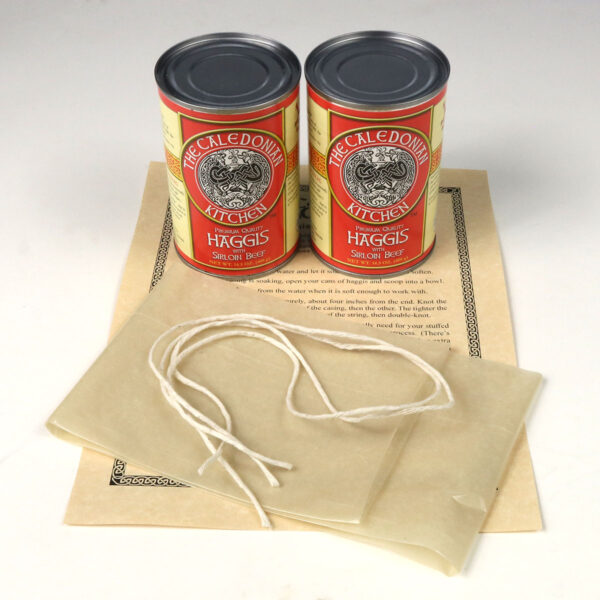 Mini Presentation Haggis Kit$35.00
Mini Presentation Haggis Kit$35.00 -
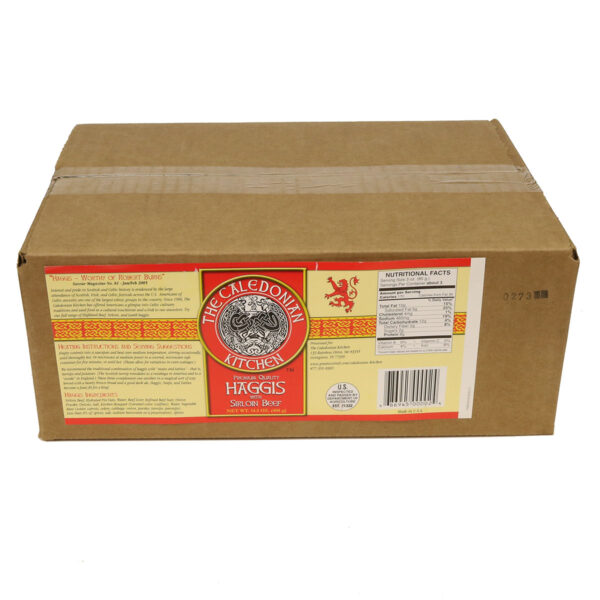 Sirloin Beef Haggis Case of 12 Cans$175.00
Sirloin Beef Haggis Case of 12 Cans$175.00 -
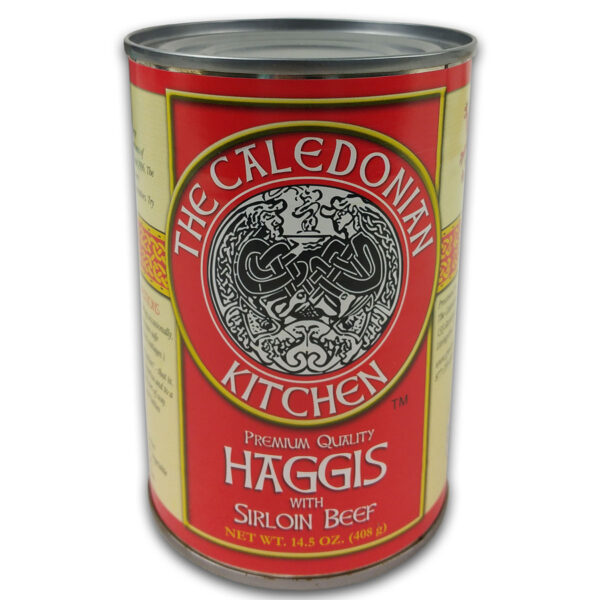 Sirloin Beef Haggis$15.00
Sirloin Beef Haggis$15.00 -
 Yummy Downloadable Haggis Recipes$0.00
Yummy Downloadable Haggis Recipes$0.00 -
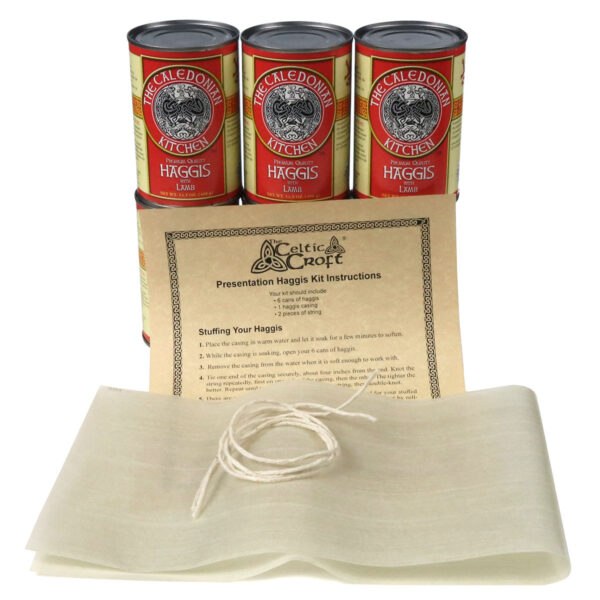 Presentation Haggis Kit$100.00
Presentation Haggis Kit$100.00 -
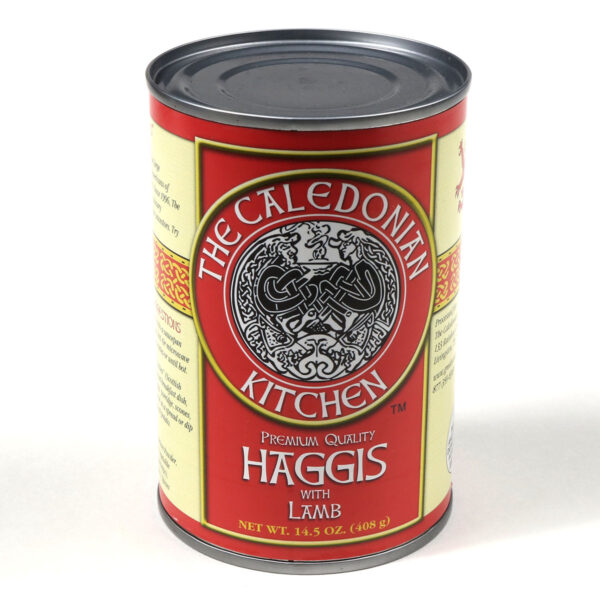 Traditional Lamb Haggis$15.00
Traditional Lamb Haggis$15.00 -
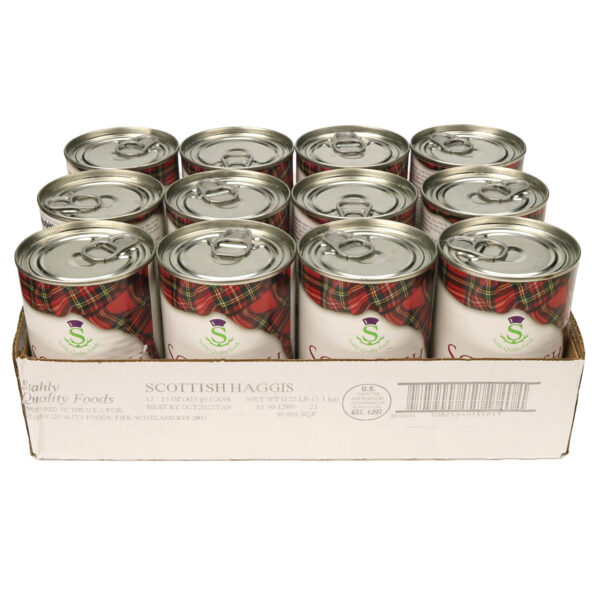 Stahly Traditional Haggis Case of 12 Cans$175.00
Stahly Traditional Haggis Case of 12 Cans$175.00 -
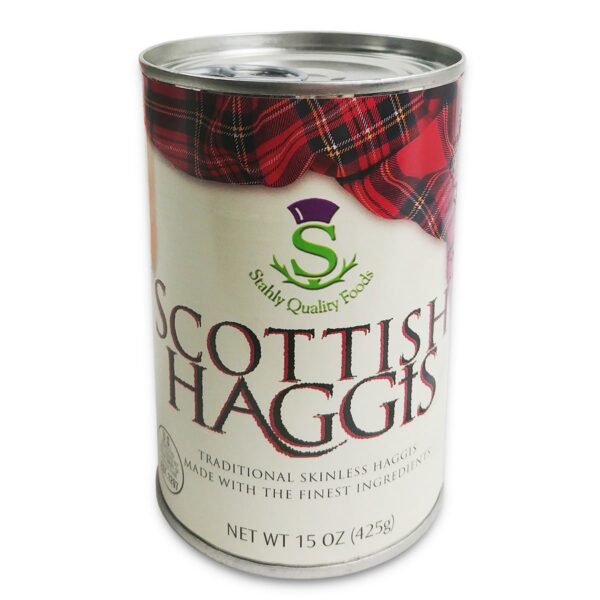 Stahly Traditional Haggis$15.00
Stahly Traditional Haggis$15.00


